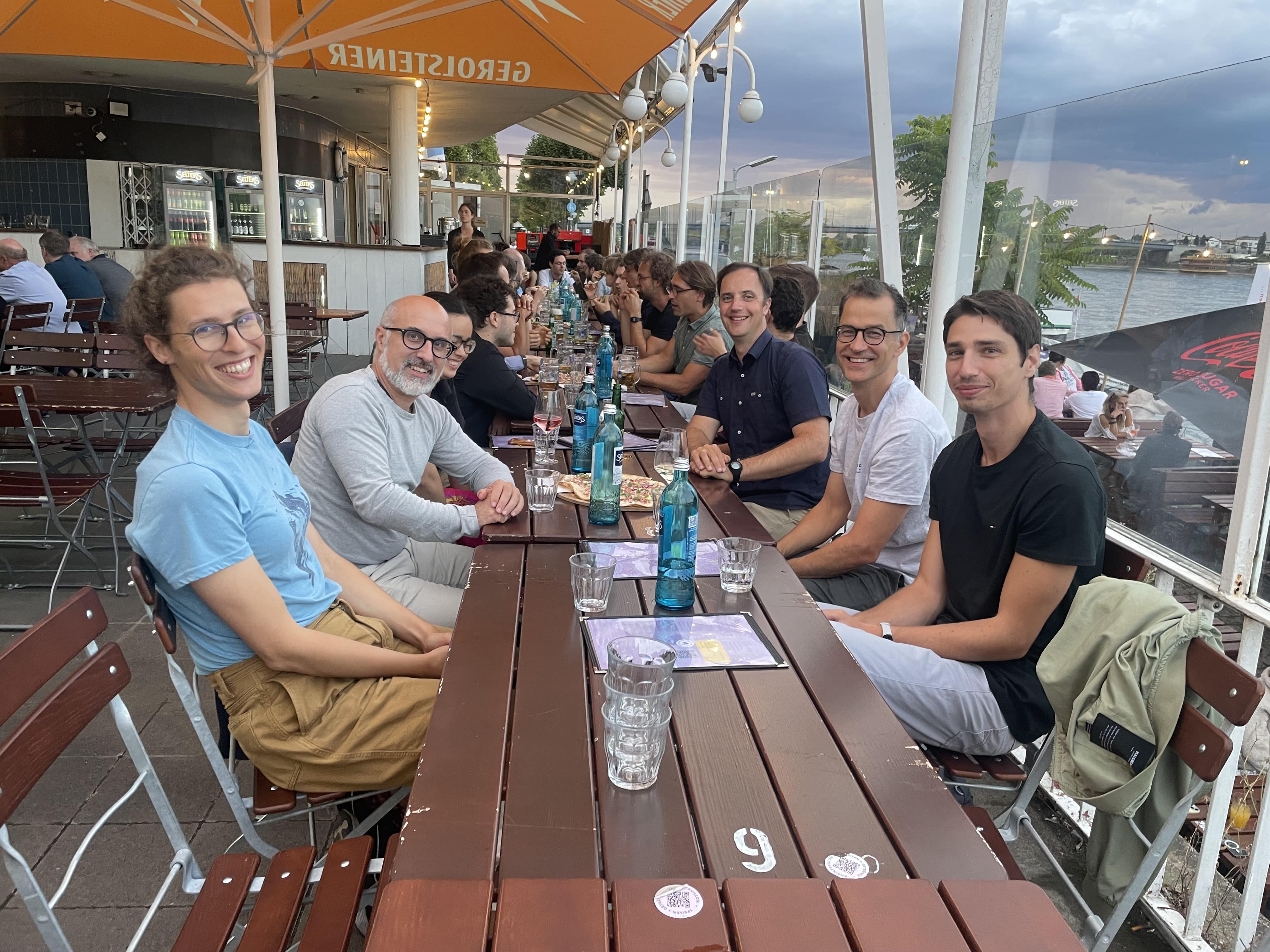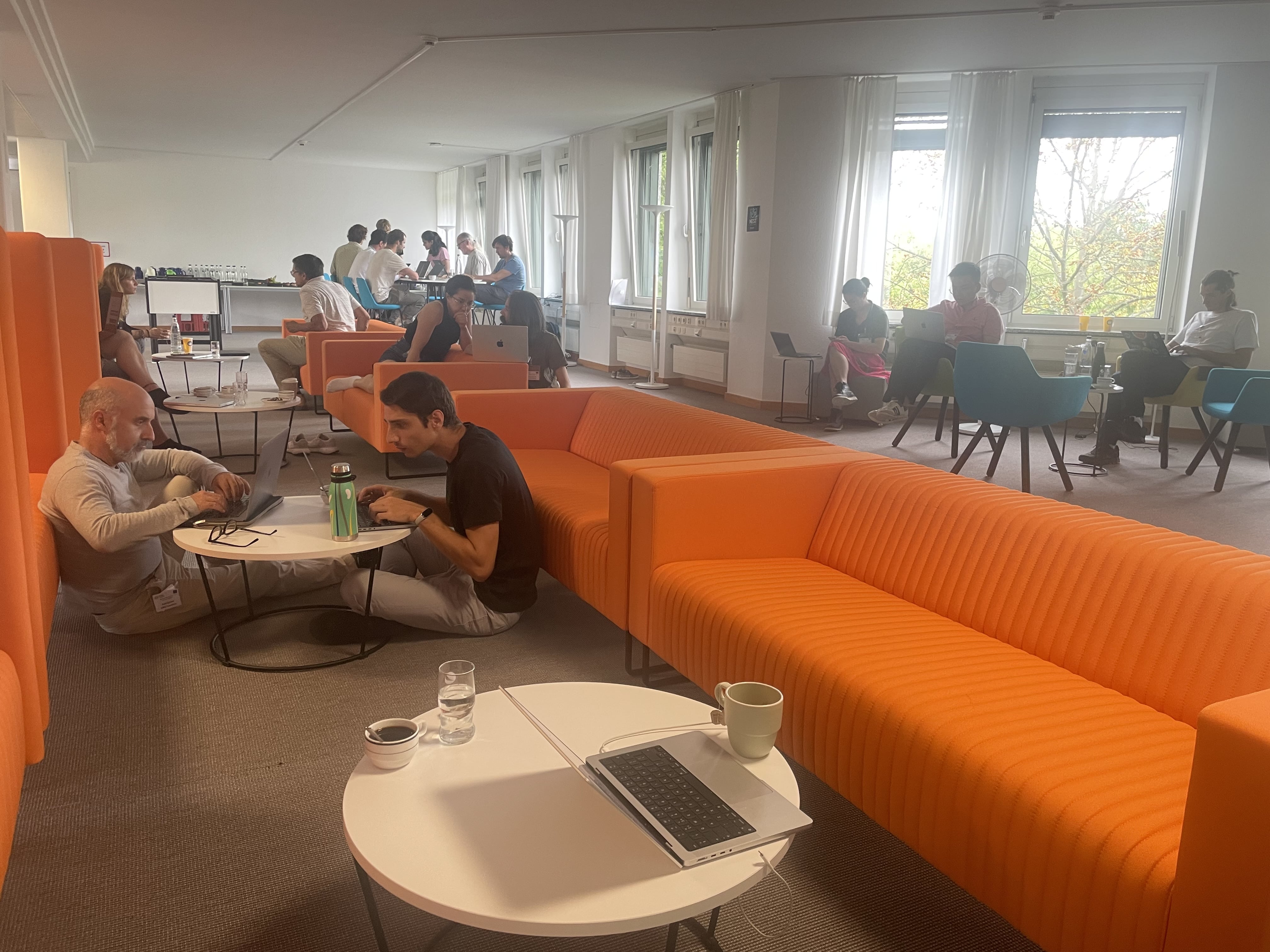WeatherGenerator’s First Internal Hackathon

From 27–29 August 2025, project partners of the EU-funded WeatherGenerator project gathered for the first internal hackathon at ECMWF’s facility in Bonn, Germany. This event brought together around 40 researchers, developers, and application partners from across Europe to collaborate in person and lay the groundwork for one of the EU’s most ambitious AI-for-climate projects.
A Space for Connection, Collaboration and Code
The hackathon opened with partner introductions and an application round-table, setting the stage for open exchange. Throughout the three days, participants worked side by side in break-out sessions, shared the latest developments in model training and tooling to foster knowledge transfer between institutions and disciplines.
During the final session of the mentorship program early career researchers and mentors came together to reflect on their experiences and academic journeys. Maike Sonnewald (UC Davis) shared insights on the value of diverse paths into climate science, the importance of trust and openness in mentoring, and how strong guidance can help young scientists grow.
The event also featured in-depth presentations on the WeatherGenerator’s two core components: the Atmosphere model and the Land model. These sessions gave a first-hand look into the challenges and progress in developing this AI-based system, designed to generate realistic weather and climate data from a wide range of observational and model inputs.
On Thursday evening, the group came together for a more informal dinner at the Rheinpavillon, offering a relaxed space for networking and personal exchange.

A Foundation Built on Four Themes
At the heart of the WeatherGenerator project are four thematic pillars, each critical to building a robust and scalable climate AI system:
Theme 1 - Data Foundations:
This team collects and harmonizes vast, high-resolution datasets from satellites, ground stations, and reanalyses. Their work ensures the data is clean, consistent, and machine learning-ready - a crucial step for training a fully data-driven model.
Theme 2 - Core Model Development:
Responsible for building and scaling the WeatherGenerator itself, this theme develops the model architecture, training strategies, and software engineering workflows that turn raw data into reliable predictions.
Theme 3 - Real-World Applications:
With 22 use cases across sectors like renewable energy, weather and climate prediction, flooding and food security, health and biosphere, Theme 3 stress-tests the WeatherGenerator against current state-of-the-art tools and builds end-to-end prediction systems.
Theme 4 - Communication & Coordination:
This theme ensures the project runs smoothly and reaches key stakeholders - from policymakers to developers and the general public. They also drive community building through mentoring, workshops, and public engagement.

Looking Ahead
The hackathon was more than a technical event - it was the first real opportunity for partners to work together in person, align their goals, and start building not just models, but shared understanding and lasting collaboration.
As the WeatherGenerator project moves forward, the connections built in Bonn will play a vital role in ensuring that this next-generation tool is scientifically robust, technically scalable, and widely usable across sectors - helping Europe stay at the forefront of climate intelligence.
